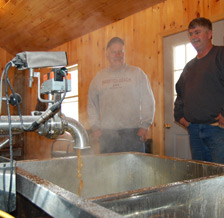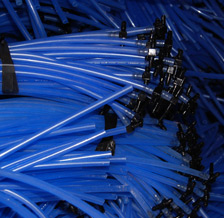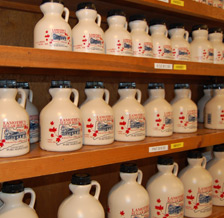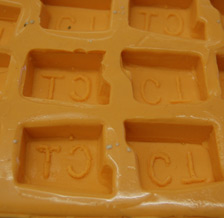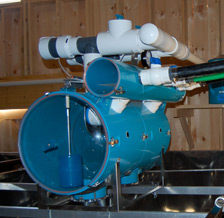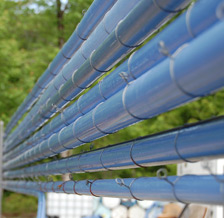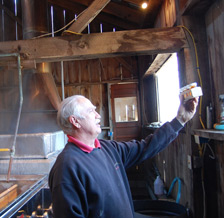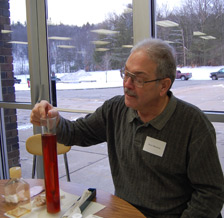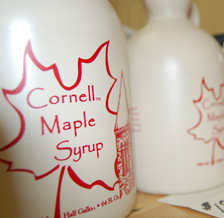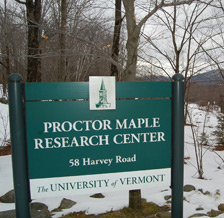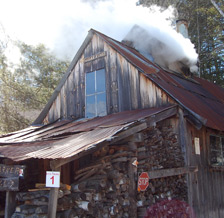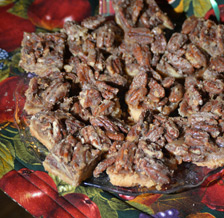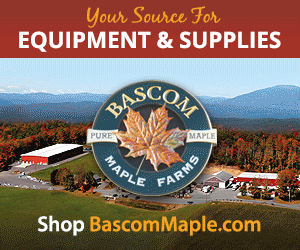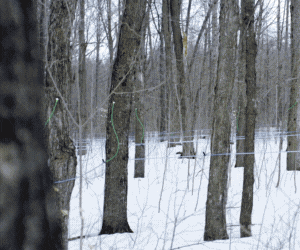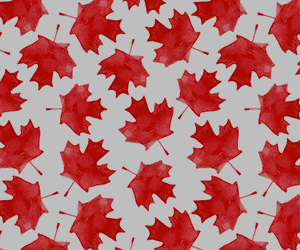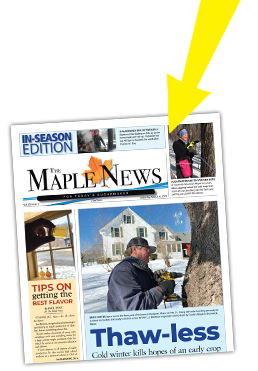BACK TO HOME
Tapping & Tubing
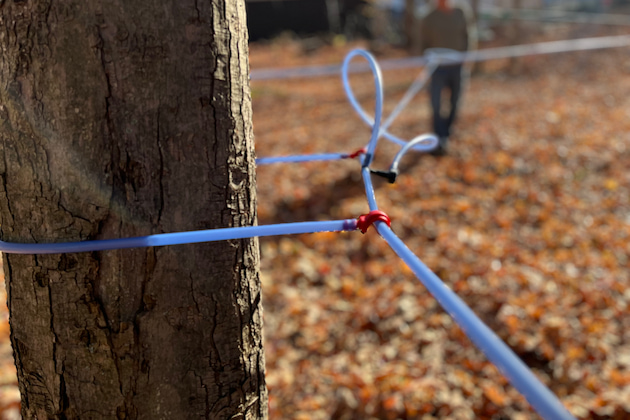
Vermont sugarmaker offers expert tubing tips
Peter Gregg | February 4, 2025
WESTMINSTER WEST, Vt.—Veteran sugarmaker Dan Crocker has been making syrup more than fifty years and over the past several seasons, he has achieved a 7lbs per tap average.
It didn’t always used to be that way.
The old benchmark for big-time Vermont sugarmakers—Crocker has 22,000 taps in southern Vermont—was an average of 5 pounds per tap, and he would hit that mark consistently.
But then he did the math, and found that for each one pound increase, he’d be putting an extra $40,000 in his pocket.
“The math is easy,” he told a group at the Lake Erie Maple Expo last fall. “That adds up fast.”
So he targeted 7lbs and has high hopes for 2025.
“And this season I’m going to be pushing 8 pounds,” he said. [ MORE ]
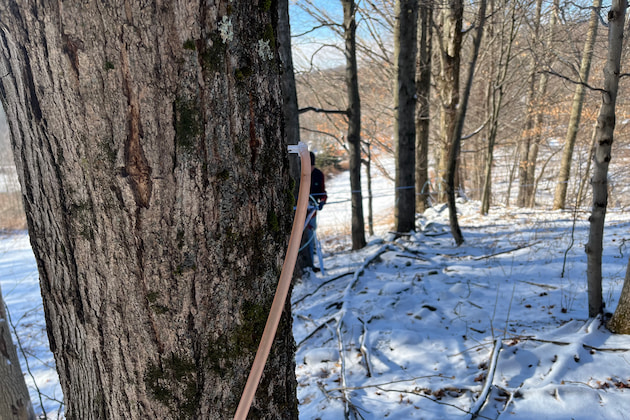
Sugarmakers prefer tapping frozen trees
Peter Gregg | January 15, 2025
SYRACUSE, N.Y.—A normal winter.
That’s how most sugarmakers are describing January of 2025 so far, with bitter cold temperatures and lots of snow all across the Maple Belt.
Meanwhile, the enthusiasm for January tapping seems to have diminished for some.
Last year at this time, many sugarmakers were making syrup already.
In fact, sugarmakers in traditionally cold areas like Wisconsin and Minnesota, even ones on gravity, we’re making January syrup last season.
This year not so much.
But that doesn’t mean producers should abandon plans to tap early in freezing cold temperatures. In fact, for many, it’s preferred. [ MORE ]

Does high vacuum 'create' leaks? Expert explains.
Michael Ruff, Becker Pumps Corp. | July 23, 2024
CUYAHOGA FALLS, Ohio—In recent years, the use of deep vacuum systems for maple extraction has sparked debate, with some concerns that these systems cause micro leaks in tree taps.
However, it’s crucial to distinguish fact from fiction.
Deep vacuum doesn’t create leaks; it merely exposes existing ones.
Before delving into the deep vacuum debate, let’s revisit the process of maple syrup extraction:
■ During the sugaring season, small holes are drilled into maple tree trunks to create taps. These taps allow sap to flow out for collection and sub- sequent processing.
■ Traditionally, gravity has been the primary force drawing sap from the trees into collection containers.
■ Technological advancements have intro- duced vacuum systems that significantly enhance sap extraction efficiency.
[ MORE ]
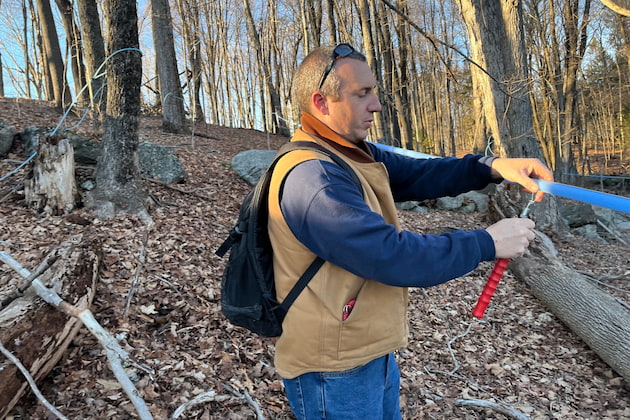
Producers encouraged to find their 20-day 'money window'
Peter Gregg | January 16, 2024
THOMASTON, Conn.—When to tap?
That’s always the sugarmaker dilemma every season but this year it seems more pronounced than others.
Wild weather and big temperature swings across the Maple Belt has had producers excited one minute and hesitant the next.
Contributing to the matter are Facebook posts from big producers who are forced to tap early because of the size of their operations, and capture early sap runs in December and January.
When to tap was the big topic of conversation this weekend at the annual meeting of the Maple Syrup Producers Association of Connecticut.
“I’m not sure when I’m going to start this season,” said Mat Wilkinson of 800-tap Wilkinson Maple Farm in Columbia, Conn.
Offering some perspective was the keynote speaker at the meeting Bradley Gillilan of Gillilan Family Maple in Fletcher, Vt. who is a tubing installer and consultant to sugarmakers across the nation.
[ MORE ]
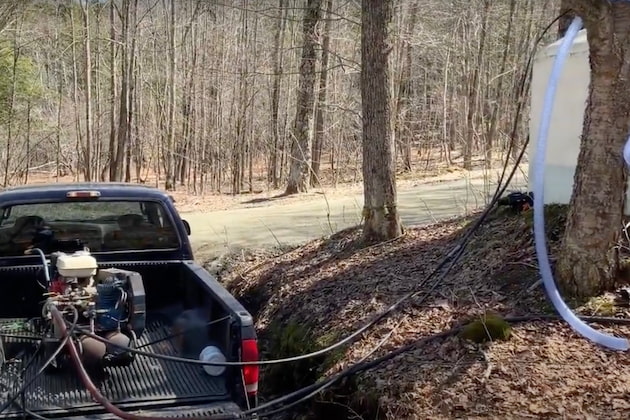
Vermont sugarmaker offers tips on tubing cleaning
Peter Gregg | November 3, 2023
SOUTH WOODSTOCK, Vt.—One of the biggest debates in maple is over the best method for cleaning tubing, or even bothering to clean it at all.
At 1,200-tap Top Acres Farm in South Woodstock, Vt. sugarmaker Mary McCuaig has developed what she says is a tried and true method.
"We use a weaker chlorine solution and begin cleaning as soon as the season ends," she told The Maple News.
"This method has allowed us to avoid replacing spouts and droplines annually and still keep yields high," McCuaig said.
"We average over half gallon of syrup per tap, and our sap is clean, starting with the first sap run."
McCuaig has posted three YouTube videos explaining her method under her YouTube channel- marymccuaig3249. [ MORE ]
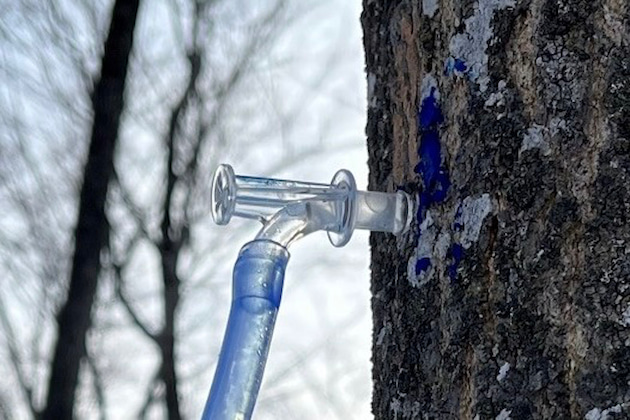
Proctor reports on 2023 season barb-spout results
By Timothy D. Perkins & Wade T. Bosley | May 18, 2023
UNDERHILL, Vt.—The outermost rings of wood in maple trees have the highest sap flow rates and have sweeter sap than the wood found deeper in the tree.
In addition, during the early part of each season there are several periods when thawing is too brief and shallow to allow sap to be collected.
This is because typical maple spouts have elongated barrels that are inserted well into the wood to anchor them in place. While this design feature of spouts reduces the tendency of sap to dislodge during deep freeze periods, it doesn’t permit sap collection during brief thaws.
Taken together, these factors reduce the amount of sap that can flow from tapholes.
Over the past five years researchers at the UVM Proctor Maple Research Center have explored different approaches to reducing these limitations in order to maximize sap yields.
One obvious solution would be to shorten the spout barrel to permit sap to flow more readily from shallower wood tissue. A consequence of this is reduced spout stability and an increased probability of spout heaving during deep freeze periods. [ MORE ]
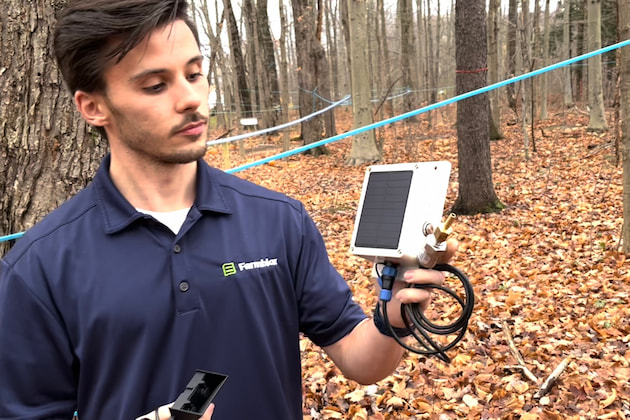
Farmblox to host open house this weekend in St. Albans
Peter Gregg | April 26, 2023
ST. ALBANS, Vt.—The Farmblox folks are inviting sugarmakers to visit Holyoke Farm, a Farmblox producer, for a special event this weekend in St. Albans, Vt.
There, sugarmakers can see a monitoring system in action in the sugarbush.
"Get all of your questions answered about the most flexible sugarbush monitoring system on the market and see how you, too, can benefit!" said Farmblox president Marc Printz.
Here's the Open House event page to link to: https://farmblox.ag/open-house
[ MORE ]
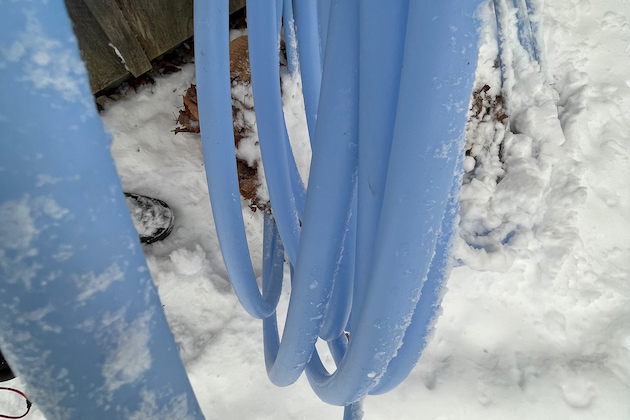
Raging debate on 3/4 pipe
Peter Gregg | April 10, 2023
PLYMOUTH, N.H.—Love it or rip it out?
A debate is starting to swirl between expert installers on the effectiveness of three quarter inch mainline. Some experts are advising that the narrow mainline does not do well transferring sap on vacuum.
“Regardless of the situation, airtight or not, there are always downsides to using 3/4 in. tubing,” said expert Joel Boutin, an advisor for the Quebec Maple Cooperative. Boutin was a guest speaker at the Vermont Maple School in December who emphasized his dislike of 3/4 inch pipe.
Boutin said that 3/4 inch mainline often acts like 5/16ths lateral lines, overfilling with sap and taking up too much space for air. He said big bubbles will form in the tube and decrease vacuum the further away from the pump.
“3/4 tubing can only carry sap from very few taps with the new yields people can get now,” Boutin told The Maple News. “In fact, it is less than 100 taps if you do more than 6 lbs per tap." [ MORE ]

